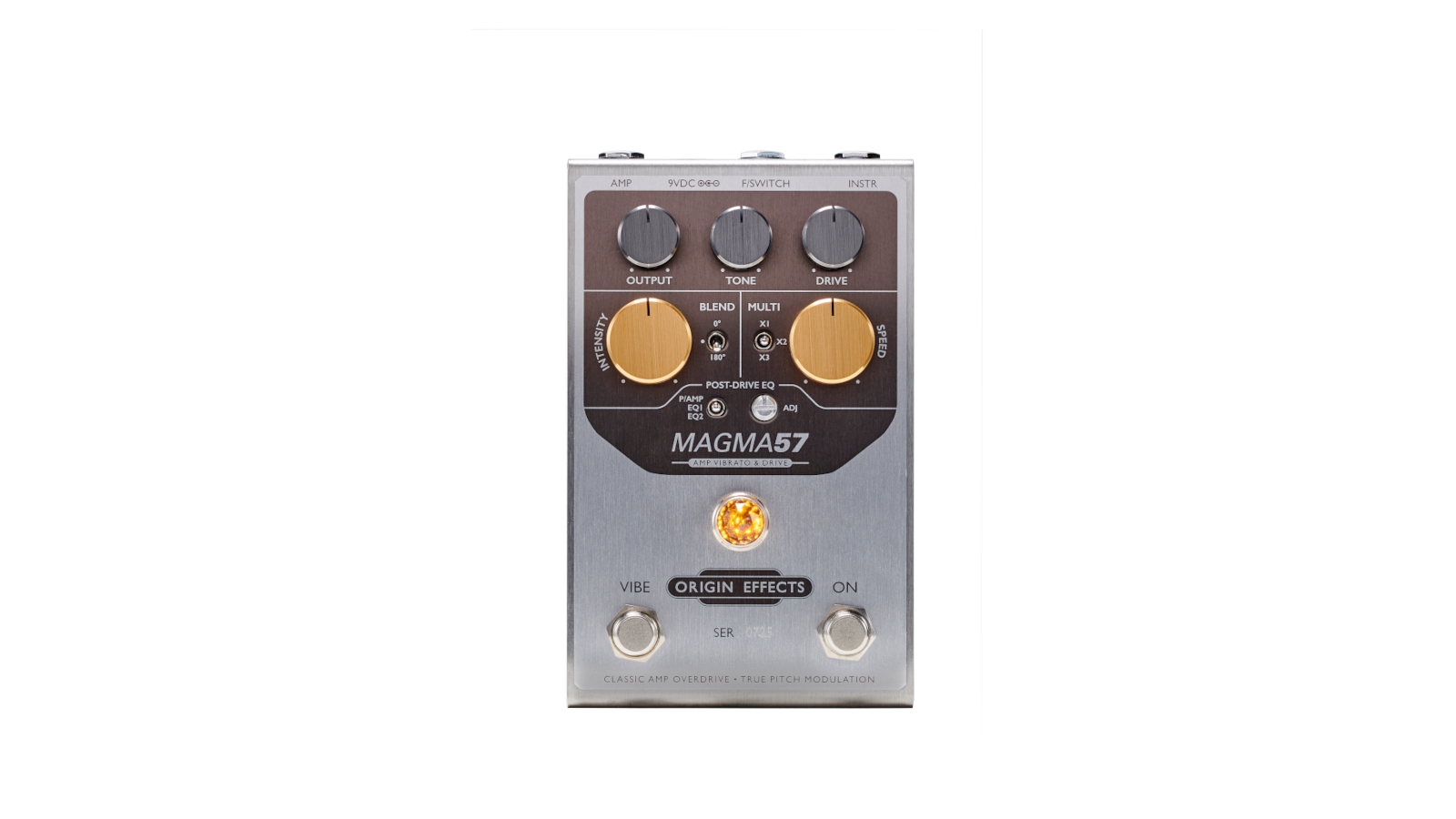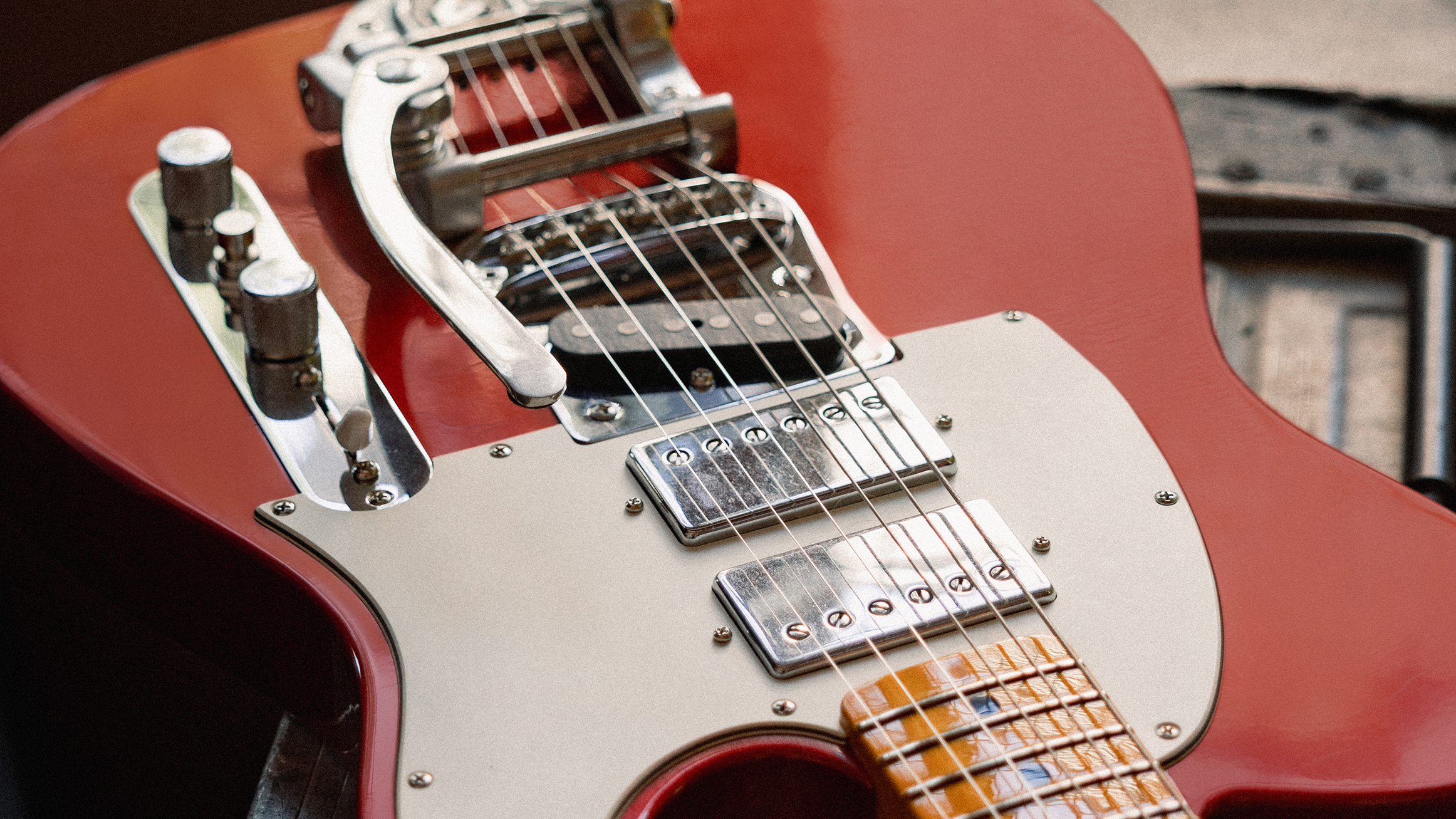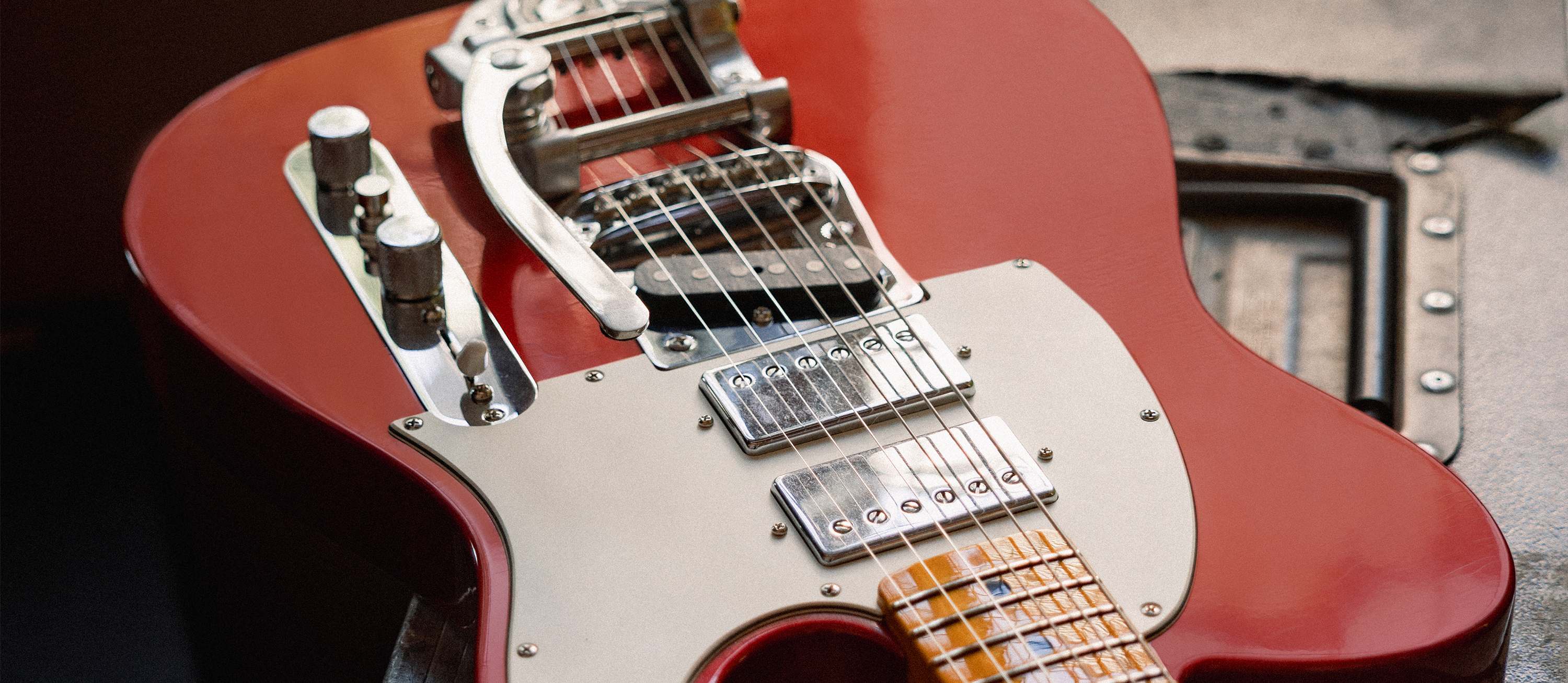GuitarPlayer Verdict
A very grown-up pedal for players who want authentic lower-gain tones with the accent on character and articulation.
Pros
- +
A bullet-proof live pedal
- +
Perhaps the finest combo of true pitch-modulation and premium low-gain amp tones we’ve ever heard
Cons
- -
High price may deter some players
You can trust Guitar Player.
Sure, Origin Effects like RevivalDRIVE and Cali76 are pricey by comparison to more mass-produced pedals, but they’re also not your garden-variety stompboxes.
You won’t find any Klon clones, faux Screamers or demi DS-1s in their lineup.
Instead, Origin has created a new class of pedal that mirrors each step in a Class A/B tube amplifier’s signal chain, while focusing their customer base on professional players who know that investing in nuanced tone controls, premium components and roadworthy housings is a wise and worthy investment.
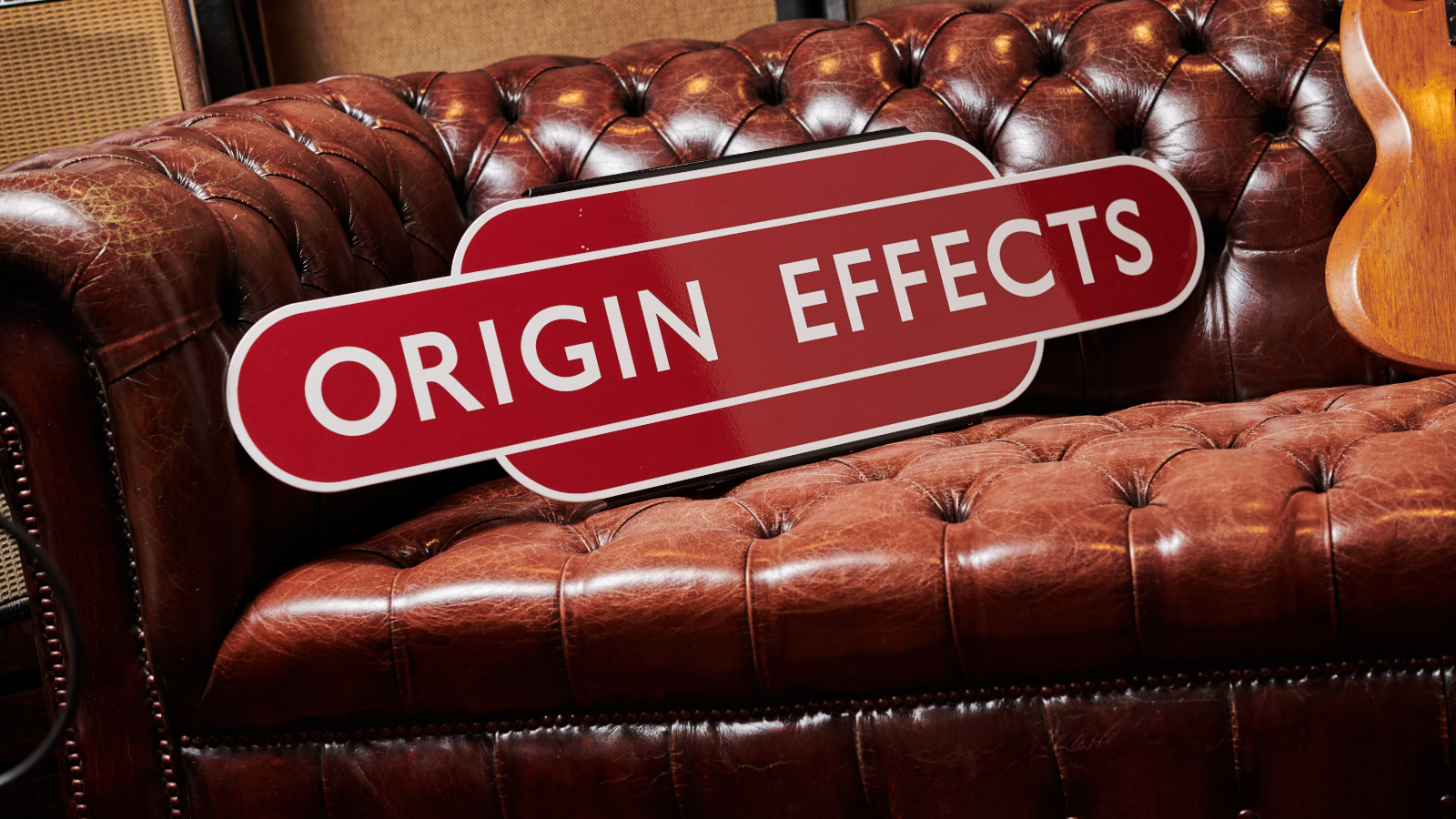
Following in the footsteps of the much-loved RevivalDRIVE and Cali76 is one of the company’s latest offerings: the MAGMA57 – a stompbox take on the coveted pitch vibrato-equipped late-’50s Magnatone amplifiers.
While connoisseurs like Billy Gibbons have been touting the charms of late-’50s Magnatone amps for years, most electric guitar players will have little experience with these beasts, and that’s a shame.
While they’re often compared to Fender Deluxes, Magnatone preamps have a slightly more compact low-end, mellower mids, and add a semi-active, semi-passive tone control, while still retaining that horn-like top and open, detailed character when pushed hard.
A number of Magnatones, including the Custom 260 and 280, also featured true pitch-bending vibrato, a different animal entirely from the volume-modulating tremolo in Fender amps.
What Origin have sought to re-create in the superbly voiced MAGMA57 is the preamp/power section from the dual-6V6 Magnatone Model 213 Troubador and the pitch-vibrato section from the Model 260 and 280.
So good, in fact, is the MAGMA57’s tone stack that you might be tempted to buy it even if it didn’t feature the remarkably good vintage-quality vibrato circuit.
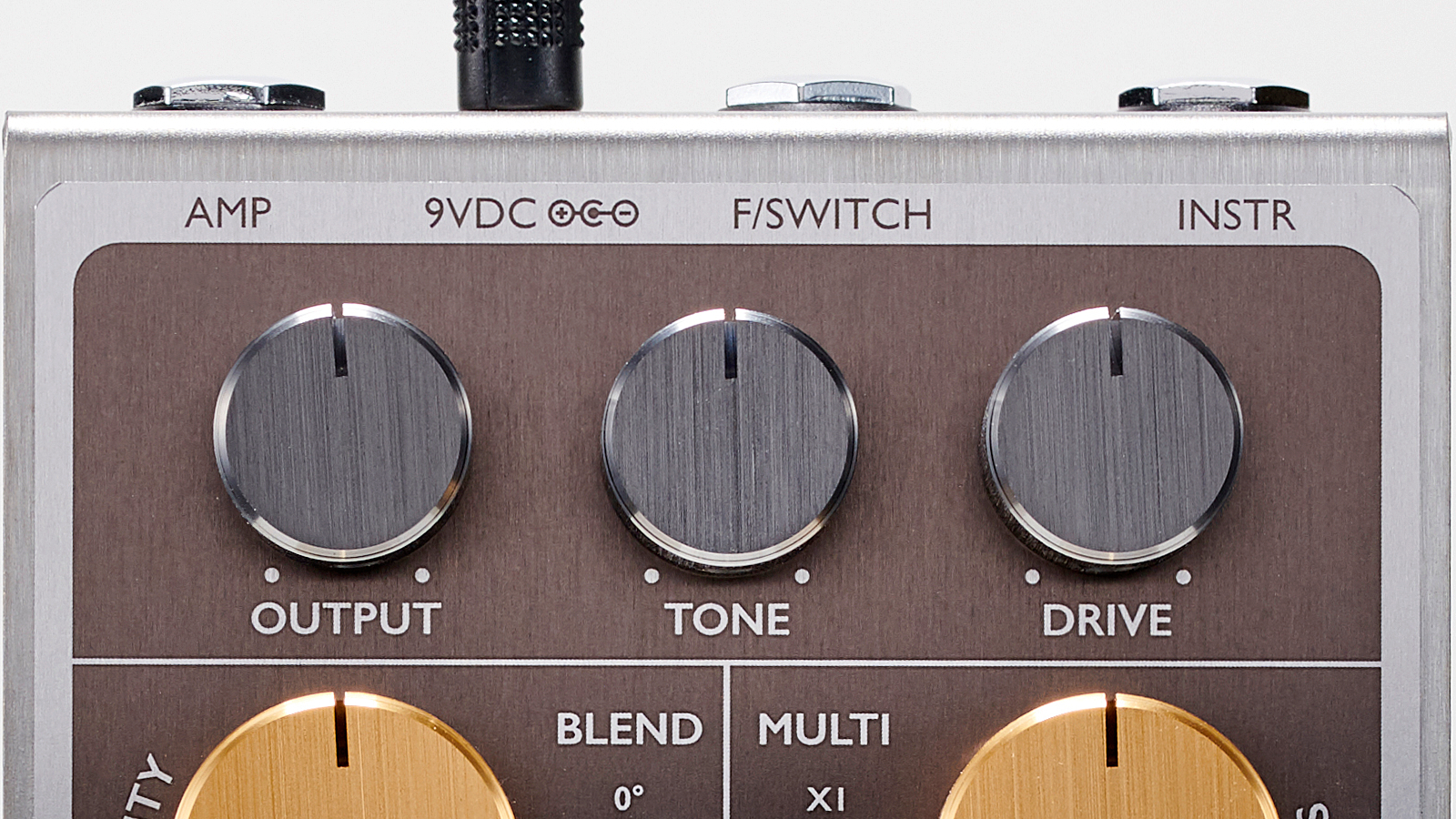
Three smaller knobs for output, tone and drive offer a terrific range of sounds, from bone-clean jazz timbres to big, surfy-smooth-but-driving cleans, to the kind of deliciously ragged and authentic old-school Muscle Shoals or Chess Records overdrive tones you thought might be lost to time.
That goes for virtually every position along the drive control’s throw.
That said, this is not the pedal you want for over-the-top modern saturation. It doesn’t do that, and it doesn’t need to. This is a very grown-up pedal for players who want authentic lower-gain tones with the accent on character and articulation.
Just as one might be tempted to buy the Magma even without the vibrato circuit, you’d be equally tempted to buy it even without the gorgeous tone stack, so good is the quality, “realness,” and expressive range of the vibrato on display here.
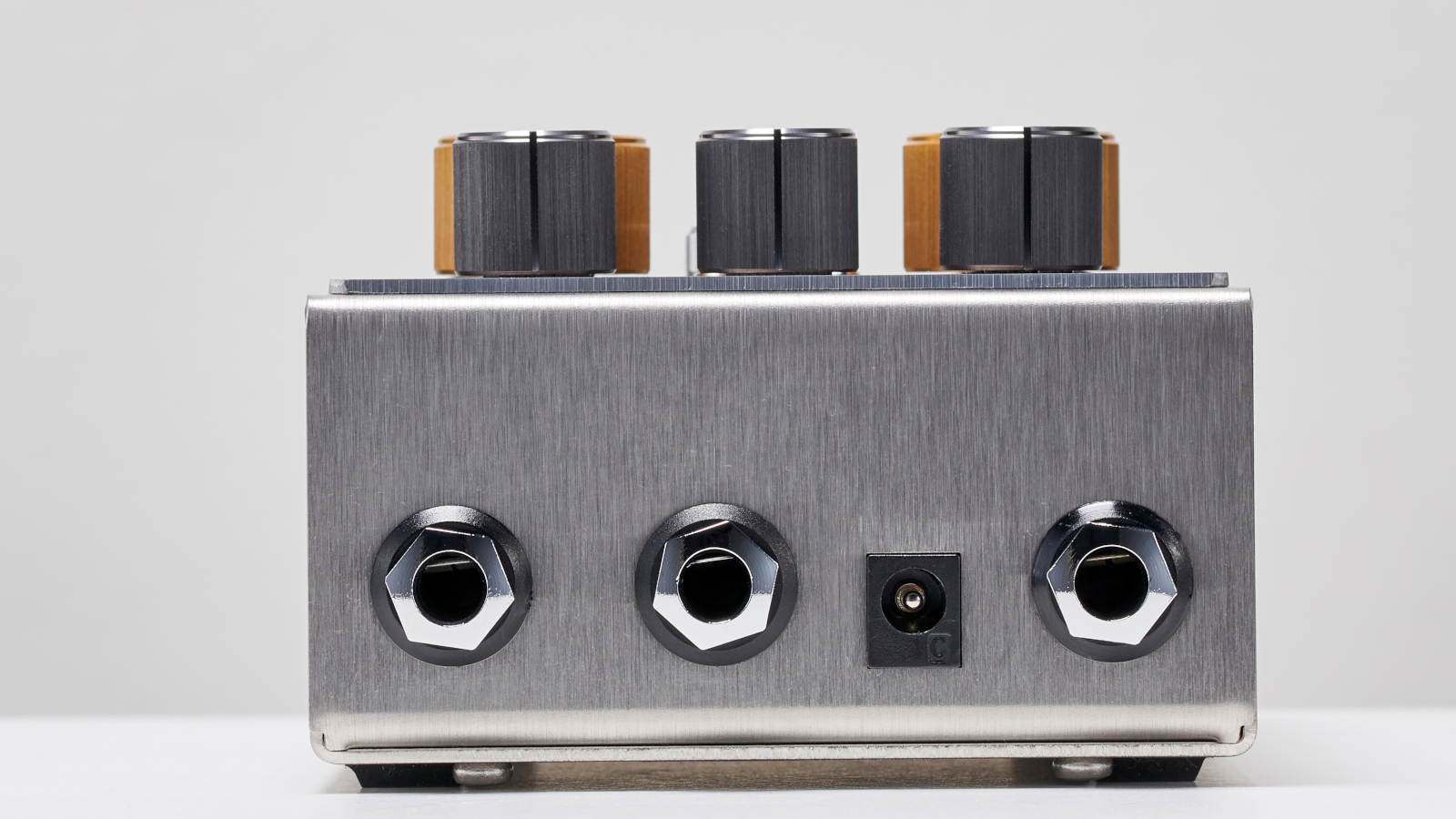
The speed and intensity controls speak for themselves, and while not decidedly different from the roles they take on other modulation pedals, the three-position blend switch (effectively a phase switch) is a superb innovation.
Switched to the top position, 0 (degrees), the two-stage vibrato is blended in-phase with the dry signal, producing one of the most convincing and thick Uni-Vibe-style sounds we’ve heard, dripping with Hendrix-ian glory.
Flipped down to the 180 (degree) position, the vibrato is summed out-of-phase, generating both phasing and amplitude modulation. It’s the kind of greasy chorus you might associate more with Kurt Cobain than Jimi Hendrix.
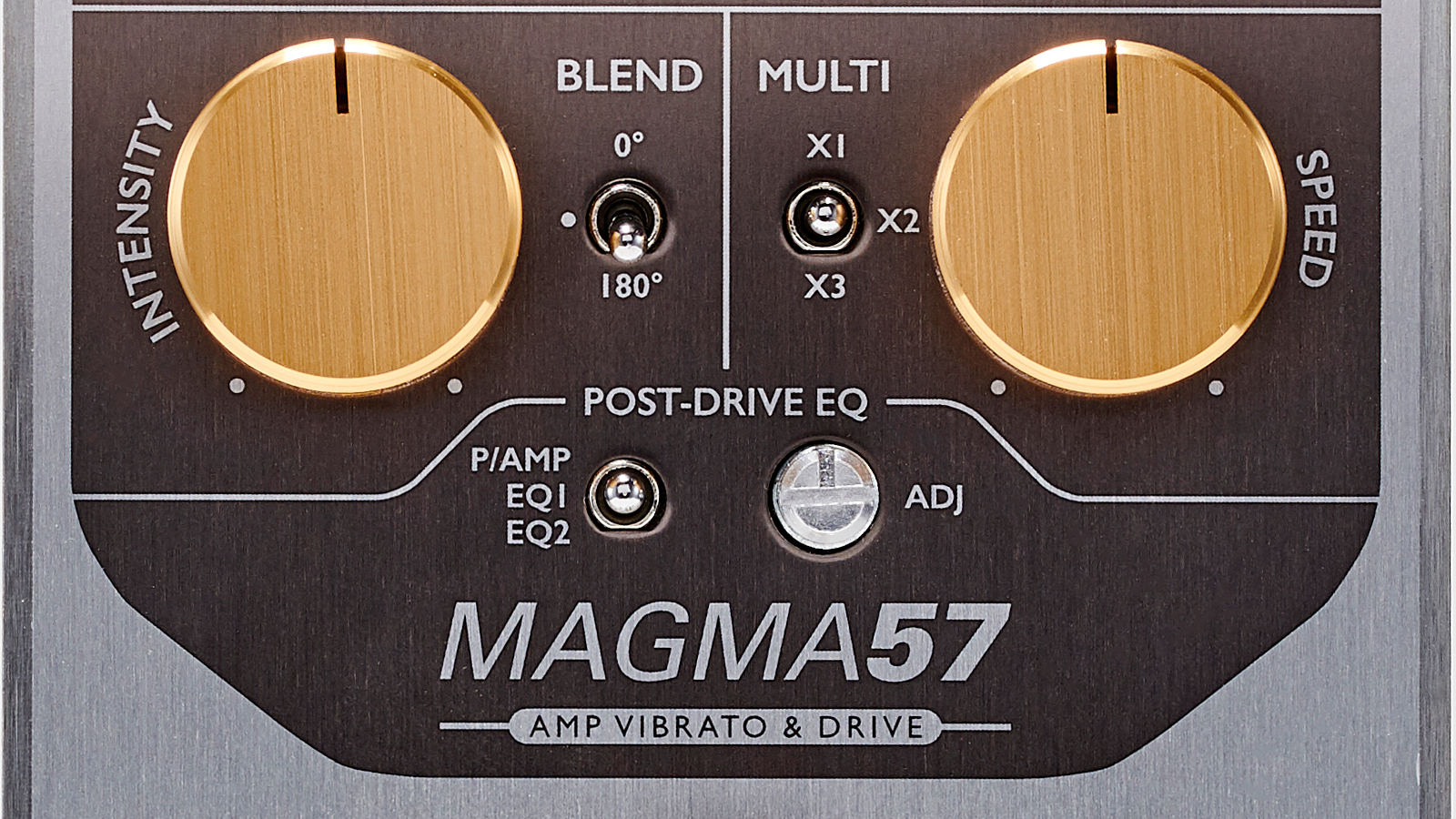
The center position is the stock Magnatone vibrato setting. It’s wet signal only, but sounds slightly chorusy and, to our ears, like the modulation circuit on an Electro-Harmonix Memory Man.
You can vary it by bringing up the Multi/Speed switch to the X3 position, creating the kind of fast, organ-like churn you’d get out of a very rapidly rotating Leslie speaker, throwing you into Jimmy Smith and John Patton organ-trio territory.
The simple fact that this range of rich, premium modulation sounds is available on one pedal, which also includes a stunning take on the Magnatone Troubador – a rare missing link in amp history – speaks for itself.
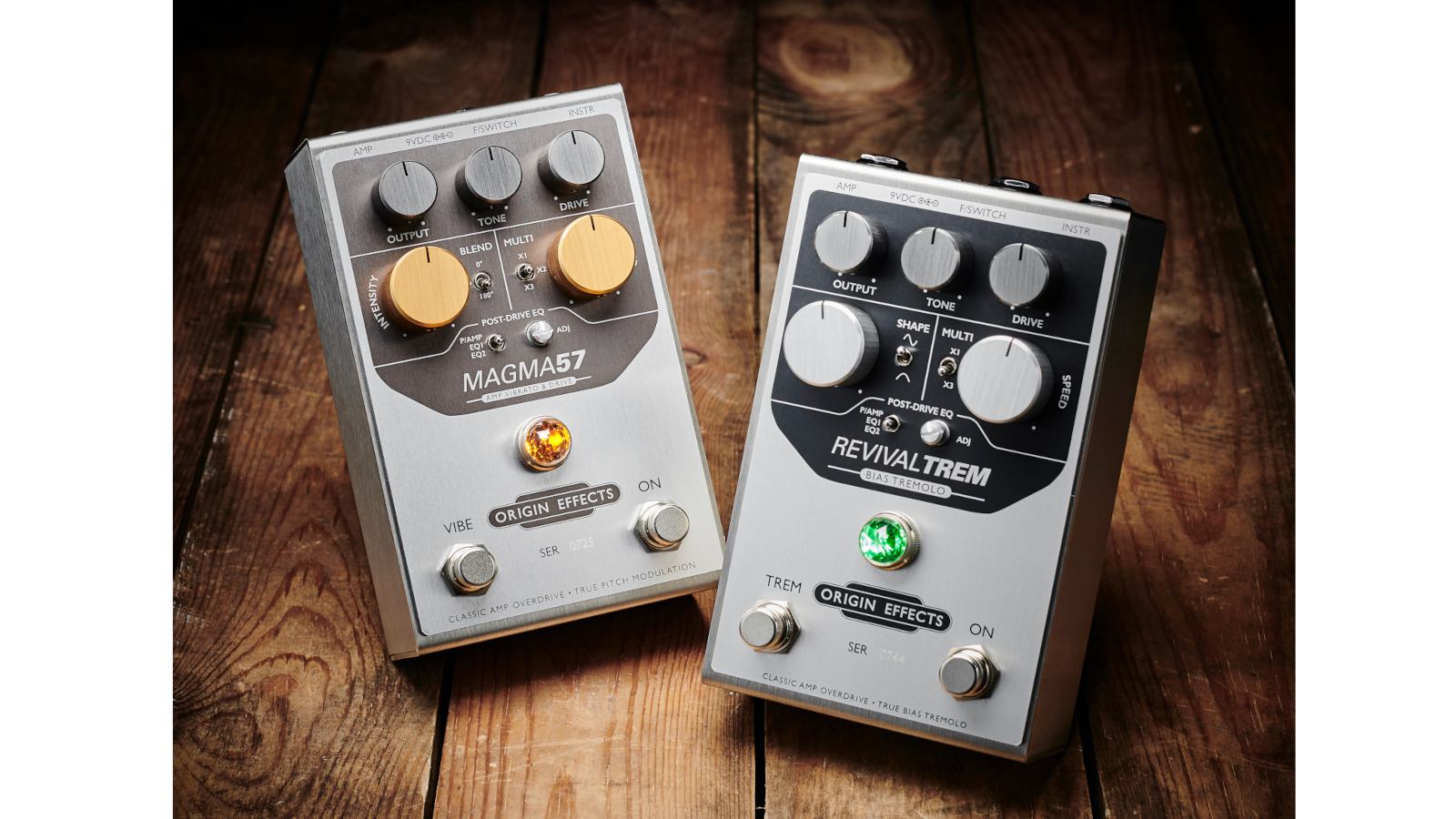
Specifications:
- CONTROLS: Output, tone, drive, intensity, speed
- SWITCHES: Blend (phase), multi (speed range), post drive EQ, P/Amp, EQ1, EQ2
- HOUSING: Hand-polished, brushed stainless steel; aluminum controls. Neutrik jacks
- EXTRAS: 9V DC 2.1mm center-negative power supply (no battery compartment)
- SIZE: 5.62” x 2.6” x 2.56”
- WEIGHT: 1.98 lbs
A former editor at Guitar Player and Guitar World, and an ex-member of Humble Pie, Mr. Bungle and French band AIR, author James Volpe Rotondi plays guitar for the acclaimed Led Zeppelin tribute, ZOSO, which The L.A. Times has called “head and shoulders above all other Led Zeppelin tribute bands.” Find JVR on Instagram at @james.volpe.rotondi, on the web at JVRonGTR.com, and look for upcoming tour dates at zosoontour.com
"The only thing missing is the noise from the tape loop." We review the Strymon EC-1 Single Head dTape Echo, a convincing take on a very special vintage tube Echoplex
"BigSky MX will be replacing the BigSky as my go-to reverb pedal. I’ve heard nothing that covers all the bases with such pristine and detailed audio quality." We crowned the Strymon BigSky MX the champ of multi-reverb pedals
